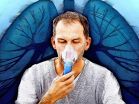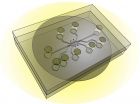(Press-News.org) Athens, Ga. – When employees feel left out, they act out.
That's the message that new research from the University of Georgia Terry College of Business delivers as it explains why employees can become weasels to benefit their work group.
"Everybody has a need for social approval. It's the basis of our human functioning," said Marie Mitchell, co-author of the research and professor of management at UGA. "But when individuals are faced with a risk of social exclusion, it motivates some pretty unsavory behaviors. We already know how people react when they're definitely being excluded from a group, when someone is mistreating them or abusing them. But what we sought to examine this time is: What if you're not sure?"
Employees can feel disconnected from their work when they think they weren't invited to lunch or when they feel isolated from group activities like getting coffee. These actions are often so subtle that it's hard to tell if they're purposeful. Regardless, the new research published in the Journal of Applied Psychology, shows that their effect on employees can be harmful.
"When a person believes that they are at risk for exclusion, they assume that there is something about their personality or their makeup that suggests they're not a valued group member, so they have to do something above and beyond what they're currently doing in order to demonstrate their value to the group," Mitchell said. "So they engage in behaviors that are pretty seedy. They undermine anybody outside that workgroup, they cheat to enhance their group's performance level, they lie to other workgroups."
Such behaviors can ripple throughout an organization, causing managers to expect unrealistic performance goals and contribute to an overtaxing, suspicious environment. They can even affect the bottom line.
"These unethical, productivity-cheating type behaviors—people think they're more productive than they actually are," Mitchell said. "They're lies, essentially. They're not really reflecting performance levels or the productivity of an organization. And what's worse is they can ultimately undermine productivity and the organization's effectiveness because if those things come to light within a group context, they will totally undermine the group and its internal dynamics. They could potentially be a dark seed within the organization as well. Those kinds of cheating behaviors have taken down companies like Enron and World Com."
Mitchell and her co-authors tested the idea through an experiment in which participants faced the risk of exclusion.
In a lab setting, participants took a personality test, then were divided into groups of four and asked to talk with each other for 15 minutes. Following the discussion, they were told they would be taking two tests that would be scored against a different group. While all four members would take the first test, the group would vote on three members to move on to a second. The research team manipulated perceived risk of exclusion by asking participants to report on which members of the four-member group they felt should participate in the last group task. Participants were then asked to do a computer task. At that time, they received an update informing them about the feedback on how the team rated whether they would move forward to the last task. The researchers randomly assigned who received high versus low perceived risk of exclusion information. Participants in the high risk for exclusion group were told that only one member voted to have them continue to the last task. Participants in the low risk for exclusion group were told that three members voted to have them continue to the last task. With members now primed to feel potential exclusion, the first test began.
It consisted of unanswerable anagrams—a mishmash of letters that the participants were told could be unscrambled to form common English words. Participants were asked to record how many anagrams they unscrambled. Since there were no correct answers, every reported instance of solving the anagrams was a lie.
"There was definitive cheating. If they put down even one thing, that was cheating," Mitchell said. "There's a generally human tendency when faced with these kind of situations for individuals to misreport what they did. But those who had a high-need for social approval and were in the group that were being excluded, they were far more likely to cheat."
Mitchell said those lies serve two purposes: to help the liar's group beat their competitors and to prove the liar's worth within the group.
"So the risk of social exclusion essentially motivates some pretty unsavory behaviors out of individuals at work," Mitchell said. "Research from others suggests that these are pretty costly behaviors, and that they're a lot more prevalent than people think that they are. The cost to organizations ranks into the billions of dollars annually."
So what can organizations do about this phenomenon? Mitchell has some answers.
"If you're a manager and you see someone who is not integrating well with the rest of the employees, take care in handling them and try to get them better integrated with their colleagues," she said. "Look at the internal dynamics and norms of what constitutes performance behaviors for your employees. Employees who are at risk of exclusion are far likelier not to engage in these behaviors if they think the entire work group will be held accountable if they behavior isn't ethical."
"If there are structures in place that demonstrate a value to ethical behavior, and even include for example, bonuses or other motivators for that behavior, that can help," she added. "Accountability systems should demonstrate that they hold individuals to doing things the right way as opposed to the wrong way."
INFORMATION:
Co-authors of the paper include Stefan Thau of INSEAD; Rellie Derfler-Rozin and Marko Pitesa of the University of Maryland; and Madan M. Pillutla of London Business School.
Cheater, cheater: UGA study shows what happens when employees feel excluded at work
Research suggests accountability systems can keep excluded employers from acting out, cheating
2014-09-22
ELSE PRESS RELEASES FROM THIS DATE:
Reversing the effects of pulmonary fibrosis
2014-09-22
New Haven, Conn. – Yale University researchers are studying a potential new treatment that reverses the effects of pulmonary fibrosis, a respiratory disease in which scars develop in the lungs and severely hamper breathing.
The treatment uses a microRNA mimic, miR-29, which is delivered to lung tissue intravenously. In mouse models, miR-29 not only blocked pulmonary fibrosis, it reversed fibrosis after several days.
The findings were published Sept. 19 in the journal EMBO Molecular Medicine.
"The mimic, when injected into the blood, goes to the lung and it has a ...
Experts provide much-needed policy analysis for clinical integration of next generation sequencing
2014-09-22
HOUSTON – (Sept. 22, 2014) – As genetic sequencing technologies continue to evolve rapidly, becoming part of clinical care, there is a critical need to establish appropriate policies and regulatory frameworks to address potential challenges, legal and ethical experts have said. A special policy issue of the Journal of Law, Medicine & Ethics published online today and edited by experts with the Center for Medical Ethics and Health Policy at Baylor College of Medicine gives policy makers the tools to jumpstart this process.
Experts with the Center for Medical Ethics and ...
Can tapioca replace corn as the main source for starch sweeteners?
2014-09-22
New Rochelle, NY, September 22, 2014—Cassava, also known as tapioca, has large starch-filled roots and can grow at high yields in areas of Africa, Asia, and Latin America where corn and sugarcane are not commonly grown. With the availability of novel enzymes and processes designed to break down tapioca starch into sugars that can then be used to produce sweeteners such as glucose, fructose, or maltose syrup, tapioca may be an ideal alternative to corn, as described in a Review article in Industrial Biotechnology, a peer-reviewed journal from Mary Ann Liebert, Inc., publishers. ...
Kessler pilot study demonstrates benefits of wellness program for people with MS
2014-09-22
West Orange, NJ. September 22, 2014. Kessler researchers have published a pilot study showing the benefits of a 10-week psychoeducational wellness program in people with multiple sclerosis (MS). Improvements were seen in mood, overall mental health, perceived stress, and pain. "Development and effectiveness of a psychoeducational wellness group for individuals living with MS: Description and outcomes" was epublished ahead of print on September 3 in the International Journal of MS Care (doi: 10.7224/1537-2073.2013-045). The authors are Kimberly Beckwith McGuire, PhD, of ...
Priorities for research on pharmaceutical and personal care products in the environment
2014-09-22
PENSACOLA, Fla. – In 2011 the Society of Environmental Toxicology and Chemistry (SETAC) held a workshop for 45 international experts to identify and prioritize the scientific research needed to understand the risks of pharmaceuticals and personal care products (PPCPs) in the environment. The effort was extended, and results were published in the most recent issue of the Society's international journal, Integrated Environmental Assessment and Management (IEAM). The published work is accompanied by a podcast interviewing the lead author of the study, Murray Rudd from the ...
Wildfires in Khabarovsk Krai, Russia
2014-09-22
Most of the fires captured in this image burn in Khabarovsk Krai, a territory occupying the coastline of the Sea of Okhotsk. Dozens of red hotspots, accompanied by plumes of smoke mark active fires. The smoke, which appears mostly white or grey, blows to the east towards the Sea of Okhotsk. Taiga and tundra are found in the north of this area, swampy forest inhabit the central depression, and deciduous forests are the natural vegetation in the south.
While large wildfires are common in Russia in the summer, the 2014 wildfire season appears to be more intense than usual. ...
New chip promising for tumor-targeting research
2014-09-22
WEST LAFAYETTE, Ind. – Researchers have developed a chip capable of simulating a tumor's "microenvironment" and plan to use the new system to test the effectiveness of nanoparticles and drugs that target cancer.
The new system, called a tumor-microenvironment-on-chip (T-MOC) device, will allow researchers to study the complex environment surrounding tumors and the barriers that prevent the targeted delivery of therapeutic agents, said Bumsoo Han, a Purdue University associate professor of mechanical engineering.
Researchers are trying to perfect "targeted delivery" methods ...
Brainwave test could improve autism diagnosis and classification
2014-09-22
September 22, 2014 – (BRONX, NY) – A new study by researchers at Albert Einstein College of Medicine of Yeshiva University suggests that measuring how fast the brain responds to sights and sounds could help in objectively classifying people on the autism spectrum and may help diagnose the condition earlier. The paper was published today in the online edition of the Journal of Autism and Developmental Disabilities.
The U.S. Centers for Disease Control and Prevention estimates that 1 in 68 children has been identified with an autism spectrum disorder (ASD). The signs and ...
Common diabetes drug associated with risk of low levels of thyroid hormone
2014-09-22
Metformin, a commonly used drug for treating type 2 diabetes, is linked to an increased risk of low thyroid-stimulating hormone (TSH) levels in patients with underactive thyroids (hypothyroidism), according to a study in CMAJ (Canadian Medical Association Journal). Low levels of TSH can cause harm, such as cardiovascular conditions and fractures.
Metformin is used to lower blood glucose levels by reducing glucose production in the liver. However, some previous studies have raised concerns that metformin may lower thyroid-stimulating hormone levels.
Researchers looked ...
University of Chicago neuroscientists challenge long-held understanding of the sense of touch
2014-09-22
Different types of nerves and skin receptors work in concert to produce sensations of touch, University of Chicago neuroscientists argue in a review article published Sept. 22, 2014, in the journal Trends in Neurosciences. Their assertion challenges a long-held principle in the field—that separate groups of nerves and receptors are responsible for distinct components of touch, like texture or shape. They hope to change the way somatosensory neuroscience is taught and how the science of touch is studied.
Sliman Bensmaia, PhD, assistant professor of organismal biology and ...
LAST 30 PRESS RELEASES:
The impact of family dynamics on eating behaviour – how going home for Christmas can change how you eat
Tracing the quick synthesis of an industrially important catalyst
New software sheds light on cancer’s hidden genetic networks
UT Health San Antonio awarded $3 million in CPRIT grants to bolster cancer research and prevention efforts in South Texas
Third symposium spotlights global challenge of new contaminants in China’s fight against pollution
From straw to soil harmony: International team reveals how biochar supercharges carbon-smart farming
Myeloma: How AI is redrawing the map of cancer care
Manhattan E. Charurat, Ph.D., MHS invested as the Homer and Martha Gudelsky Distinguished Professor in Medicine at the University of Maryland School of Medicine
Insilico Medicine’s Pharma.AI Q4 Winter Launch Recap: Revolutionizing drug discovery with cutting-edge AI innovations, accelerating the path to pharmaceutical superintelligence
Nanoplastics have diet-dependent impacts on digestive system health
Brain neuron death occurs throughout life and increases with age, a natural human protein drug may halt neuron death in Alzheimer’s disease
SPIE and CLP announce the recipients of the 2025 Advanced Photonics Young Innovator Award
Lessons from the Caldor Fire’s Christmas Valley ‘Miracle’
Ant societies rose by trading individual protection for collective power
Research reveals how ancient viral DNA shapes early embryonic development
A molecular gatekeeper that controls protein synthesis
New ‘cloaking device’ concept to shield sensitive tech from magnetic fields
Researchers show impact of mountain building and climate change on alpine biodiversity
Study models the transition from Neanderthals to modern humans in Europe
University of Phoenix College of Doctoral Studies releases white paper on AI-driven skilling to reduce burnout and restore worker autonomy
AIs fail at the game of visual “telephone”
The levers for a sustainable food system
Potential changes in US homelessness by ending federal support for housing first programs
Vulnerability of large language models to prompt injection when providing medical advice
Researchers develop new system for high-energy-density, long-life, multi-electron transfer bromine-based flow batteries
Ending federal support for housing first programs could increase U.S. homelessness by 5% in one year, new JAMA study finds
New research uncovers molecular ‘safety switch’ shielding cancers from immune attack
Bacteria resisting viral infection can still sink carbon to ocean floor
Younger biological age may increase depression risk in older women during COVID-19
Bharat Innovates 2026 National Basecamp Showcases India’s Most Promising Deep-Tech Ventures
[Press-News.org] Cheater, cheater: UGA study shows what happens when employees feel excluded at workResearch suggests accountability systems can keep excluded employers from acting out, cheating




